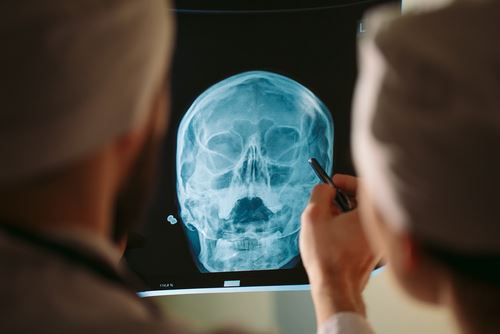 Victims who suffer injuries as a result of negligence have the right to pursue personal injury lawsuits. These civil legal actions provide victims with opportunities for holding at-fault parties accountable and securing financial compensation to cover their damages. Because damages range from case to case, and often vary based on the severity of injuries, personal injury cases are often distinguished by the nature of a victim’s underling injuries. This is why injury attorneys commonly make a distinction between typical personal injury lawsuits and lawsuits involving catastrophic injuries.
Victims who suffer injuries as a result of negligence have the right to pursue personal injury lawsuits. These civil legal actions provide victims with opportunities for holding at-fault parties accountable and securing financial compensation to cover their damages. Because damages range from case to case, and often vary based on the severity of injuries, personal injury cases are often distinguished by the nature of a victim’s underling injuries. This is why injury attorneys commonly make a distinction between typical personal injury lawsuits and lawsuits involving catastrophic injuries.
At Biren Law Group, our Los Angeles personal injury lawyers have represented clients who suffered all types of injuries, including those from which victims were able to make full recoveries and injuries that left victims suffering from life-altering, long-term, and even permanent repercussions. While we always fight aggressively to secure the compensation our clients deserve in any case we handle, we do distinguish when cases involve catastrophic injuries, as they can present unique legal issues.
Below are a few reasons why catastrophic injury lawsuits and personal injury lawsuits differ:
- Greater damages – The most defining aspect that differentiates a catastrophic injury case from a personal injury case that does not involve catastrophic injuries is damages. Because catastrophic injuries are those where victims suffer severe physical injuries, victims naturally incur greater damages. These include both economic damages associated with things like medical care (including the need for more invasive surgical procedures, longer recoveries, physical therapy, and more) and non-economic damages that compensate victims for their emotional losses. For example, victims who suffer permanent impairments as a result of their accidents typically have greater non-economic damages than those who are able to make full recoveries. This is due to the fact that permanent impairments or disabilities can create daily challenges in the lives of victims, make them dependent on loved ones or attendants for care and assistance, and prevent them from enjoying the activities and hobbies they once enjoyed. In addition to past pain and suffering, victims can also recover future non-economic damages, including future pain and suffering related to their serious injuries and the toll they take on their physical wellbeing.
- Future medical needs – More severe injuries commonly require more serious and long-term medical care. While victims may have long-term needs when recovering from non-catastrophic injuries, they are typically far less severe in scope and duration than care required by catastrophically injured victims. In cases involving paralysis, spinal cord injuries, birth injuries, and severe traumatic brain injuries, for example, victims may have ongoing medical conditions that persist throughout their lives, as well as needs for future medical appointments, medications, therapy (speech, vocational, physical, etc.), specialized education, accommodations, and medical devices, among others. In the most severe cases, victims may even require daily living assistance for the rest of their lives. Calculating future medical needs is common in lawsuits filed by catastrophically injured victims, and it is critical to ensuring victims and their families have the financial means to secure the care they need.
- Expert testimony – Catastrophic injuries can range from severe burns and catastrophic fractures to amputations, sensory loss, and motor function impairment. While people generally understand the medical issues associated with non-catastrophic injuries, including sprains and minor orthopedic injuries, those issues can be highly complex when they concern major injuries, significant surgeries and treatment, impairment or disability, and future needs of victims. As such, catastrophic injury cases often entail more medical information than other typical injury cases, as well as the need for medical experts who can examine victims and provide their opinions regarding the severity of injuries and prognosis. Medical documentation and expert testimony are often critical to proving future medical needs and illustrating the severe scope of damages suffered by victims, especially at trial when juries need to be informed about the severe nature of injuries.
- Aggressive defense – Apart from the greater potential for more severe damages and future needs, catastrophic injury lawsuits also differ from typical personal injury claims in that they are commonly defended against aggressively by insurance companies or companies that have been named as defendants, which may be the situation in cases involving defective products, premises liability, and more. Although insurance companies and companies that face injury claims always have an interest in paying as little as possible to victims, those interests are elevated when there is more on the line. Because catastrophic injury cases can cost these corporations hundreds of thousands of dollars, if not millions, they are extremely aggressive in fighting back. This may involve a greater likelihood of disputing fault and liability entirely, disputing damages, and even a reluctance to settle claims if they believe they have better chances at trial.
Because the stakes are high in catastrophic injury cases, medical information complex, and defendants keen to avoid large payouts, the need for proven and experienced attorneys is always critical. At Biren Law Group, we leverage our extensive experience and resources to address the unique issues posed by catastrophic injury cases, and to fight for the full amount of compensation victims need, both for their past damages and their future needs. If you have questions about a potential catastrophic injury case, contact us for a free consultation.

